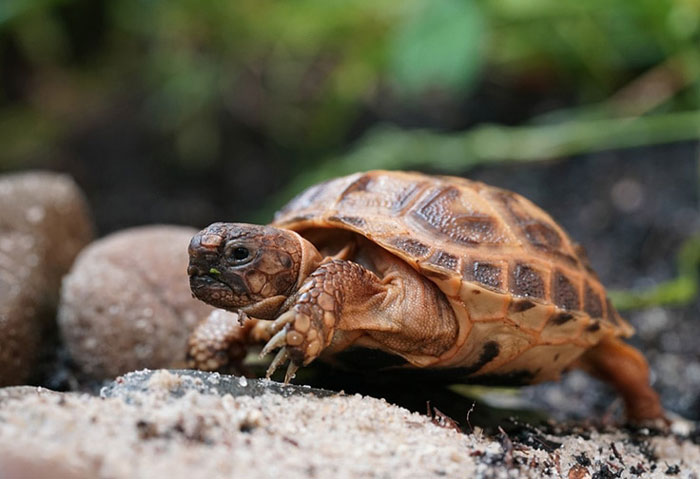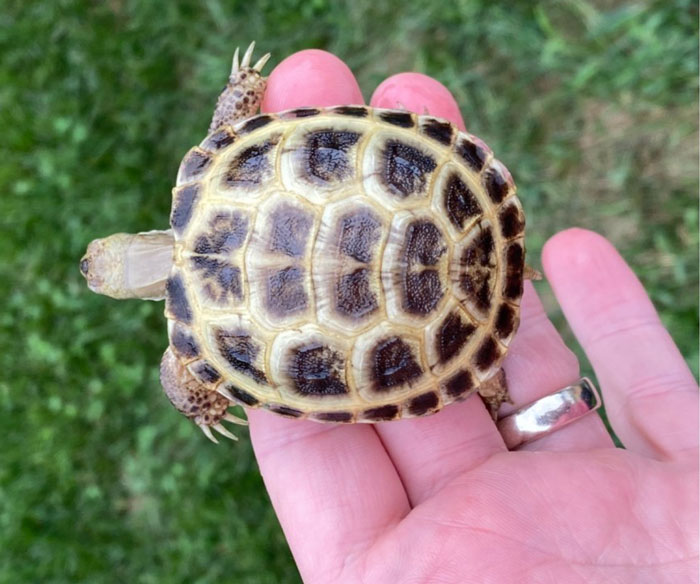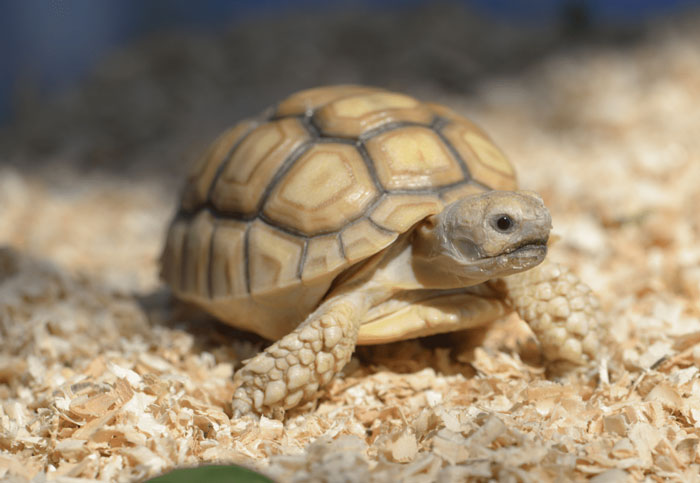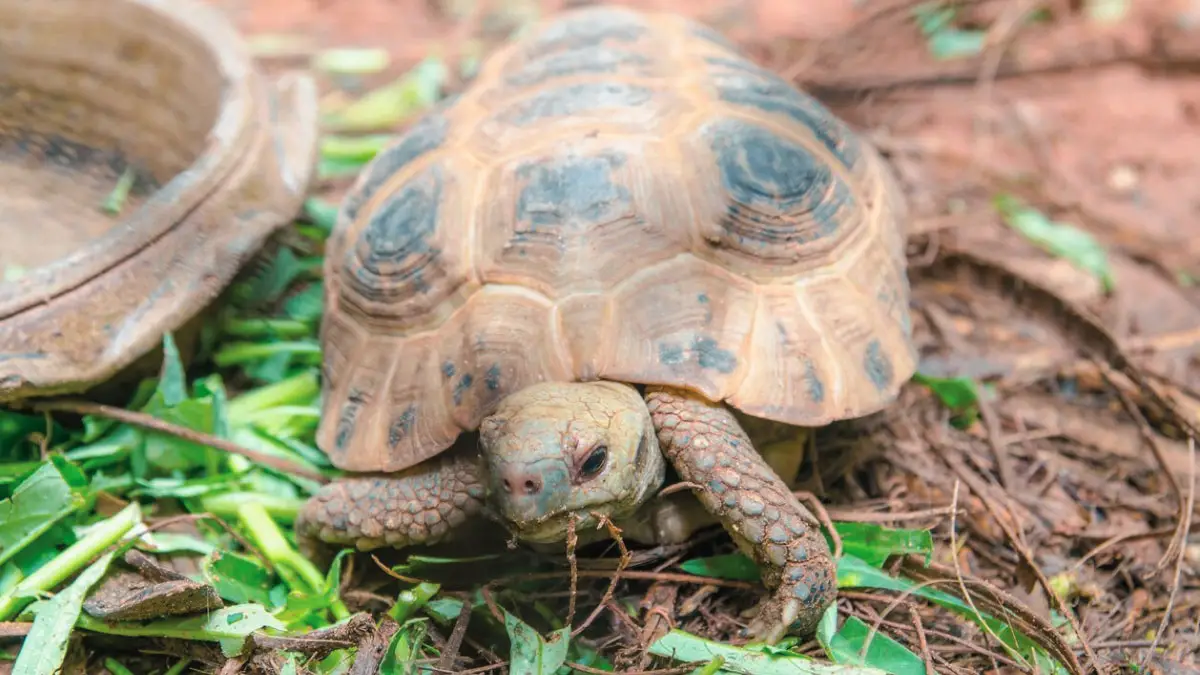Do Russian Tortoises Like To Be Held? Not Really, But Can Be A Pet!
Are you thinking of getting a Russian tortoise as a pet? Sure, these small and hard creatures have a lot of personality and charm.
But do Russian tortoises like to be held, cuddled, and petted like some other animals do? Well, not really. Russian tortoises are not very affectionate animals, and they do not seek human contact or attention. They do not have the same emotional bond with their owners as some mammals or birds do. Also, they do not associate being held with positive feelings.
They are mostly solitary and independent. Then, is it okay to hold them, or how do you hold them? Find out the right answer right below.
Do Russian Tortoises Like To Be Held? (Explained In-depth)
Contents
Russian tortoises do not like to be held for several reasons. First of all, being held is a stressful and unnatural experience for them.
According to a National Geographic report on Galápagos tortoises, we know that tortoises, in general, are prey animals. They face many predators, such as birds of prey, foxes, dogs, cats, snakes, and humans. This is also likely the case for Russian tortoises.

So, when they are picked up by someone or something, they instinctively feel threatened and scared. As such, they may (or may not) try to escape, hide in their shell, or bite as a last resort.
Secondly, Russian tortoises are active animals that enjoy roaming around their habitat, looking for food, digging burrows, and basking in the sun. They have a circadian rhythm that regulates their activity and rest cycles according to the light and temperature changes.
When someone holds them, they lose control over their environment and their choices. Moreover, as reported by the World Chelonian Trust, disruption of the circadian rhythm can cause the decline of health for Russian tortoises.
Additionally, holding them too tightly or too loosely can cause damage to their internal organs or limbs.
Now, it’s clear at this point that Russian tortoises do not like to be held. But, there are some circumstances when you have to hold them for necessary reasons. Read more about it in the sections below.
Are There Any Benefits of Holding a Russian Tortoise When Necessary?
Despite the fact that Russian tortoises do not like to be held, there are some benefits of holding them occasionally.

Some of these benefits are:
1. Holding them can help you check their health and well-being.
You can examine their eyes, ears, nose, mouth, skin, shell, legs, tail, and vent for any signs of illness or injury.
2. Holding them can help you transport them safely when needed.
Sometimes, you may need to move your tortoise from one place to another for various reasons. Such as cleaning their enclosure, taking them to the vet, or traveling with them. In these cases, holding them helps you to do that.
How to Hold a Russian Tortoise Safely?
If you decide to hold your Russian tortoise for any of the necessary reasons mentioned above, you should follow these steps to do it safely:
Step 1: Wash your hands before and after handling your tortoise.
As supported by a 2014 peer-reviewed study, Russian tortoises are prone to various types of bacterial infection. So, washing your hands before touching will prevent the transmission of any germs or parasites between you and your tortoise.
Step 2: Approach your tortoise slowly and calmly from the front or the side.
Do not surprise them from behind or above, as this will scare them and make them think you are a predator.
Step 3: Gently slide one hand under the front part of their shell and support their head and front legs with your fingers.
Place your other hand under the back part of their shell and support their hind legs and tail with your fingers. Do not squeeze or lift their shell from the sides, as this can hurt them.
Step 4: Hold your tortoise close to your body and at a level that is comfortable for both of you.
Do not hold them too high or too low, as this can make them feel insecure or dizzy. Do not tilt or flip them over, as this can cause stress or injury.
When to Avoid Holding or Touching a Russian Tortoise?

There are some situations when you should avoid holding or touching your Russian tortoise altogether. These include:
1. When they are sick or injured.
If your tortoise is showing any signs of illness or injury, such as lethargy, loss of appetite, discharge, swelling, bleeding, or shell rot, you should not handle them unless it is necessary for treatment.
2. When they are hibernating or aestivating.
If your tortoise is hibernating in the winter or aestivating in the summer, you should not disturb them unless it is absolutely necessary.
3. When they are shedding or molting.
If your tortoise is shedding their skin or molting their scutes, you should not touch them unless it is necessary for grooming.
4. When they are mating or nesting.
If your tortoise is mating with another tortoise or nesting to lay eggs, you should not touch them unless it is necessary for breeding.
FAQs
Let’s check out some queries that you might have in your mind.
When a tortoise bites, it stays stuck to the object it bites. So, if your Russian tortoise bites you while holding it, you should do the following:
- Don’t panic or react violently. This can scare them and cause more damage.
- Gently pry open their mouth with fingers or a blunt object. Don’t twist their neck.
- Clean and treat the wound. Wash, apply antiseptic, and bandage. See a doctor if needed.
Building trust is key for bonding with Russian tortoises without holding them. Hand feed treats to them, make eye contact, give them names and talk to them. Plus, provide food enrichment, use positive reinforcement training, and spend time together to allow them to become comfortable with you at their own pace.
There are some obvious signs that indicate that your tortoise does not like being held:
- Hides in shell, retracts head/legs inside.
- Struggles, bites, hisses, or snaps to escape.
- Changes color – turns darker to absorb heat if cold or scared or lighter to reflect heat if hot or sick.
- Tenses up or shakes the body.
- Claws or scratches.
Final Verdict
In conclusion, Russian tortoises do not like to be held in general, as it is a stressful and unnatural experience for them. Notice the signs we mentioned above, and you should also be able to recognize whether your tortoise is enjoying or not liking being held.
Remember, there are some benefits and reasons for holding them occasionally, as long as you do it safely and respectfully. So, by using the insights in this article, you are sure to have a healthy and happy relationship with your tortoise. Happy petting!

